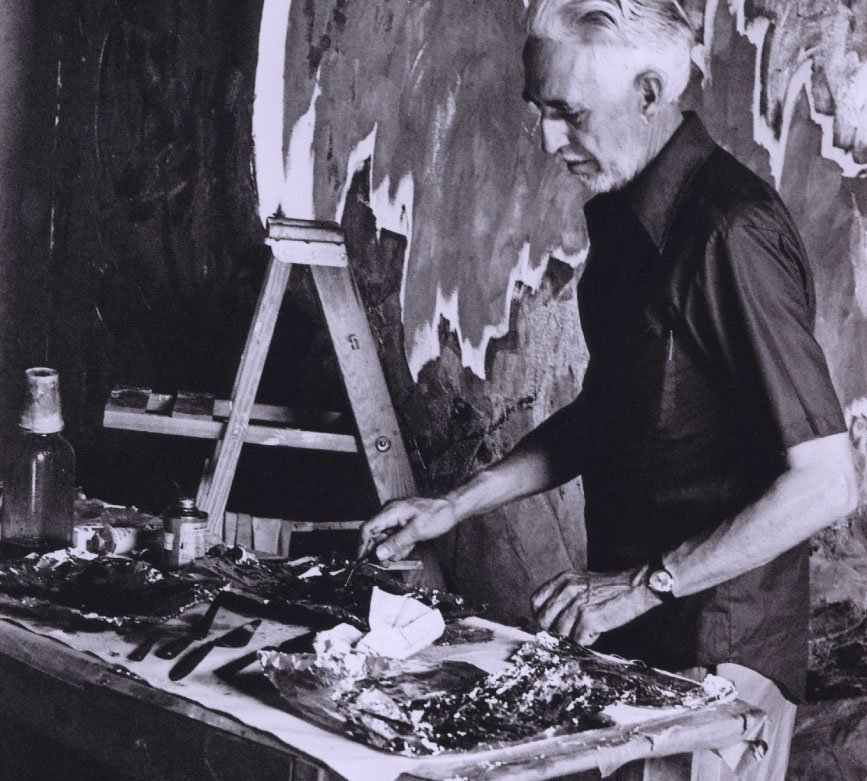
Clyford Still
Clyfford Still was an American painter associated with both the Abstract Expressionist and Color Field movements. He is best known for his paintings that resemble flame-like crevices or shapes. Inspired by the windswept landscape of the Canadian prairie, he developed a technique of applying thick layers of paint onto the canvas using a palette knife, creating jagged flares of dark tones against lighter areas of yellows, oranges, and reds. “I want the spectator to be on his own before the paintings, and if he finds in them an imagery unkind or unpleasant or evil, let him look to the state of his own soul.” Born on November 20, 1904 in Grandin, ND, he spent his youth between Bow Island, Canada, and Spokane, WA. Still went on to study at Spokane University, before receiving his MFA from Washington State College. After mostly painting agrarian scenes and Surrealist compositions, Still began working in abstraction. In 1944, Still moved to New York and began exhibiting alongside emerging abstract painters such as Mark Rothko, Jackson Pollock, and Barnett Newman. From this period onward, most of the artist’s works were titled with dates and numbers, as in his 1944–N No.2 (1944). Still eventually withdrew from the New York art scene, and began to restrict the lending and exhibition of his paintings. The artist died on June 23, 1980 in Baltimore, MD. Much of his work can be found in the Clyfford Still Museum in Denver, as well as The Museum of Modern Art in New York, the Art Institute of Chicago, and the National Gallery of Art in Washington, D.C.
Credit artnet.com





